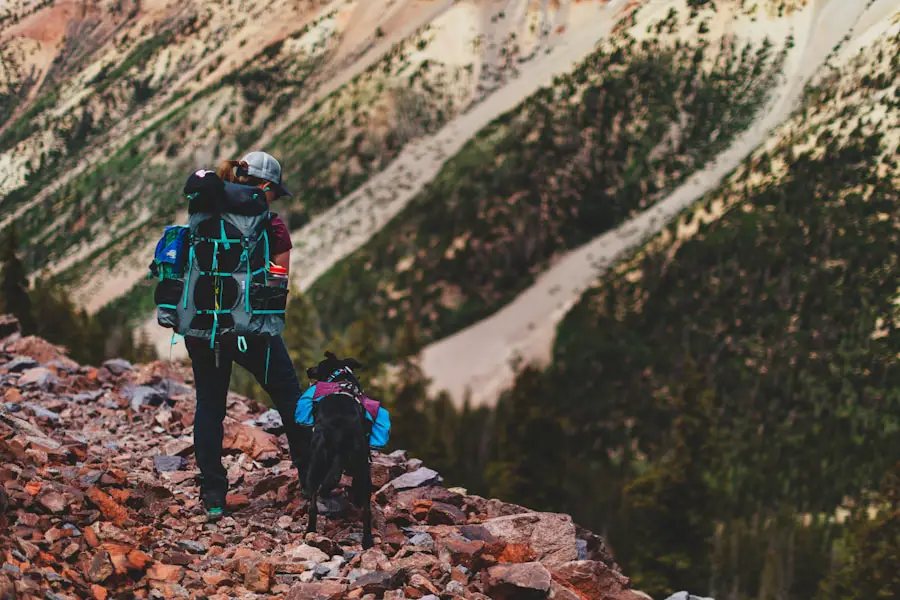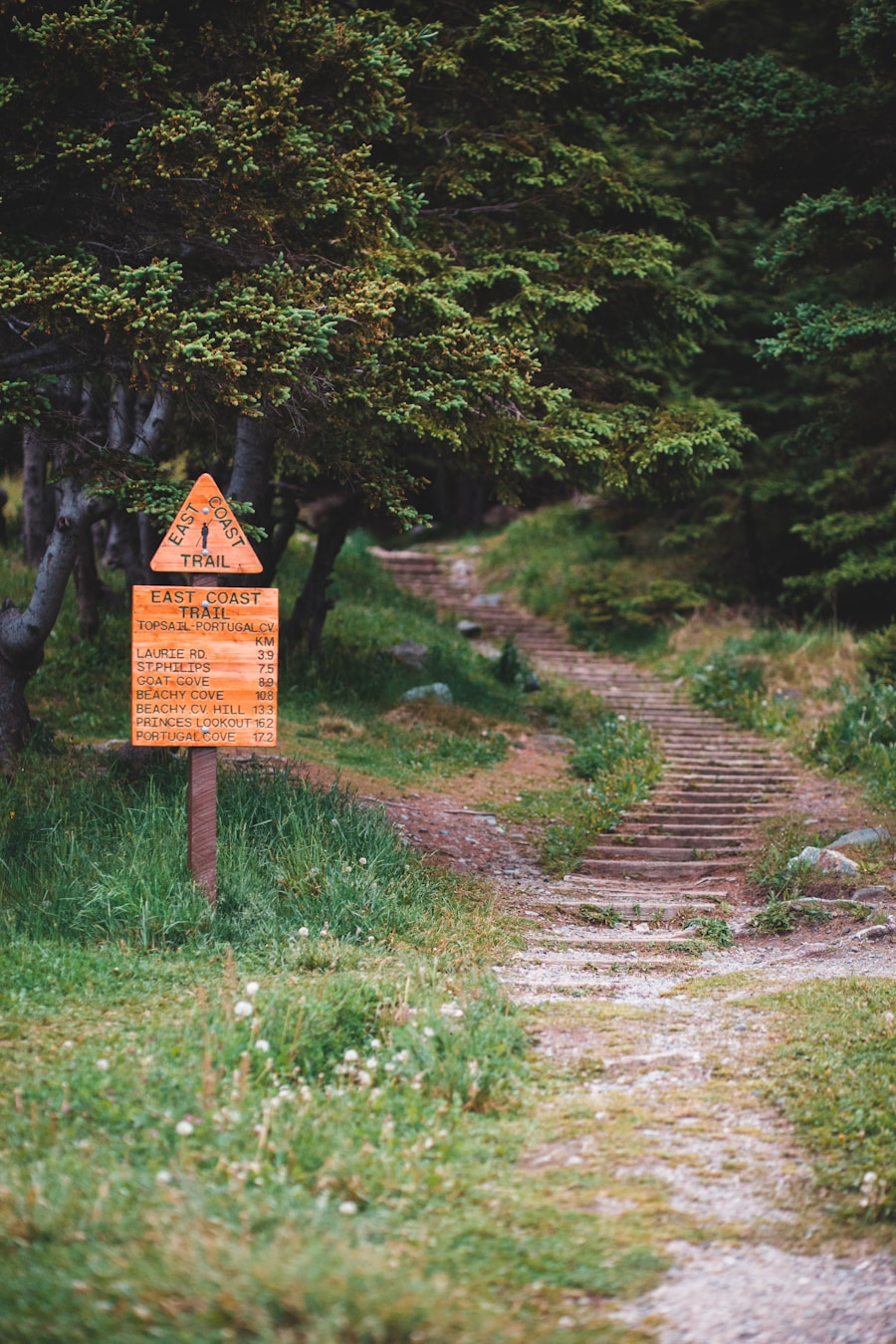Selecting the appropriate trail is a fundamental step in ensuring a safe and enjoyable hiking experience. The choice of trail can significantly influence not only the physical demands of the hike but also the overall enjoyment and safety of the journey. Factors such as difficulty level, length, terrain type, and environmental conditions should be carefully considered.
For instance, a novice hiker may find a steep, rocky trail overwhelming, while an experienced hiker might seek out more challenging routes that offer breathtaking views and unique landscapes. Researching trails through guidebooks, online resources, or local hiking clubs can provide valuable insights into what to expect. Additionally, understanding the seasonal conditions of a trail is crucial.
Some trails may be accessible only during certain times of the year due to snow, mud, or wildlife activity. For example, a trail that is picturesque in the fall may become treacherous in the spring due to melting snow and increased water flow in streams. It’s also wise to consider the time of day you plan to hike; starting early can help you avoid the heat of midday sun in summer months or ensure you have ample daylight for your return journey.
By taking these factors into account, hikers can select trails that align with their skill levels and preferences, ultimately enhancing their outdoor experience.
Key Takeaways
- Choose a trail that matches your skill level and experience to ensure a safe and enjoyable hike.
- Pack essential navigation tools such as a map, compass, and GPS device to help you stay on track.
- Stay aware of your surroundings by regularly checking your map and paying attention to landmarks.
- Follow trail markers and signs to stay on the designated path and avoid getting lost.
- Use a map and compass in conjunction with GPS technology for a more reliable navigation system.
Packing Essential Navigation Tools
Traditional Navigation Aids
A topographic map of the area provides detailed information about elevation changes, terrain features, and potential hazards. Familiarizing oneself with reading topographic maps can greatly enhance a hiker’s ability to navigate through unfamiliar territory. Additionally, a compass is a classic tool that, when used correctly, can help orient the map and guide hikers in the right direction.
Modern Navigation Tools
In today’s digital age, many hikers also rely on GPS devices or smartphone applications for navigation. These tools can provide real-time location tracking and route planning features that are incredibly useful in dense forests or mountainous regions where trails may not be well-marked.
Backup Navigation Methods
However, it’s important to remember that technology can fail; batteries can die, and signals can be lost in remote areas. Therefore, carrying a backup navigation method—such as a printed map and compass—is essential for ensuring that one does not become disoriented in the wilderness.
Staying Aware of Your Surroundings

Maintaining awareness of one’s surroundings is critical for both safety and enjoyment while hiking. The natural environment is dynamic; weather conditions can change rapidly, wildlife may be present, and trail conditions can vary significantly from one section to another. By staying alert and observant, hikers can better anticipate potential hazards such as loose rocks, slippery surfaces, or sudden changes in weather.
For instance, if dark clouds begin to gather overhead, it may be wise to assess the situation and consider turning back before a storm hits. Moreover, being aware of one’s surroundings also includes recognizing other hikers and wildlife. Understanding trail etiquette—such as yielding to those going uphill or being cautious around animals—can enhance the experience for everyone involved.
Additionally, observing wildlife from a distance is crucial for both personal safety and the well-being of the animals. Many hikers find joy in spotting birds or other creatures along the trail; however, it’s important to respect their space and avoid feeding them or getting too close. This mindfulness not only contributes to personal safety but also fosters a deeper connection with nature.
Following Trail Markers and Signs
| Trail Marker | Sign Type | Location | Condition |
|---|---|---|---|
| Red Triangle | Directional | Trailhead | Good |
| Yellow Circle | Caution | Steep Slope | Faded |
| Blue Square | Informational | Scenic Overlook | Excellent |
Trail markers and signs serve as essential guides for hikers navigating through various terrains. These markers come in different forms—blazes painted on trees, signposts at intersections, or even rock cairns—and are designed to help hikers stay on course. Understanding how to interpret these markers is vital; for example, different colors may indicate varying levels of difficulty or types of trails (e.g., blue for easy trails, red for moderate).
Familiarizing oneself with local trail marking systems before embarking on a hike can prevent confusion and ensure that hikers remain on designated paths. In addition to following established markers, it’s important to remain vigilant for any signs indicating potential hazards or changes in trail conditions. For instance, signs warning of steep drop-offs or unstable ground should be taken seriously; they are placed there for safety reasons.
Furthermore, some trails may have temporary closures due to maintenance or environmental concerns. Being attentive to these signs not only enhances personal safety but also contributes to responsible hiking practices by respecting trail management efforts.
Using a Map and Compass
The combination of a map and compass remains one of the most reliable methods for navigation in the wilderness. While GPS technology has become increasingly popular among hikers, understanding how to use a map and compass is an invaluable skill that can serve as a backup when technology fails. To effectively use these tools together, one must first learn how to orient the map using the compass.
This involves aligning the compass needle with the north on the map and adjusting for declination based on the specific area being navigated. Once oriented, hikers can use the map to identify their current location and plan their route accordingly. Key features such as landmarks, elevation changes, and water sources should be noted on the map before setting out.
Additionally, understanding how to take bearings with a compass allows hikers to navigate towards specific waypoints or backtrack if necessary. Practicing these skills in familiar areas before venturing into more challenging terrains can build confidence and ensure that hikers are prepared for any situation they may encounter on their journey.
Utilizing GPS Technology

GPS technology has revolutionized outdoor navigation by providing real-time location tracking and route planning capabilities that were previously unavailable. Many modern smartphones come equipped with GPS functionality and various hiking apps that allow users to download maps for offline use. This feature is particularly beneficial in remote areas where cell service may be unreliable or nonexistent.
By utilizing GPS technology, hikers can easily track their progress along a trail, monitor their speed, and even share their location with friends or family for safety purposes. However, reliance on GPS should be tempered with caution. While these devices are incredibly useful, they are not infallible; battery life can be limited, and devices can malfunction or become damaged in rugged environments.
Therefore, it is prudent for hikers to carry portable chargers or power banks to ensure their devices remain operational throughout their journey. Additionally, having a backup navigation method—such as a map and compass—remains essential for those moments when technology fails or when navigating through areas with poor satellite reception.
Communicating Your Plans with Others
Before embarking on any hiking adventure, it is crucial to communicate your plans with someone who is not joining you on the hike. This practice serves as an important safety measure; should anything go awry during your outing—such as getting lost or encountering an injury—having someone aware of your intended route and expected return time can facilitate timely assistance. Providing details about your destination, estimated duration of the hike, and any alternate routes you might take ensures that your contact has enough information to act if necessary.
In addition to informing someone about your plans, it’s wise to check in with local authorities or park services regarding any specific regulations or conditions affecting your chosen trail. Many parks have visitor centers where rangers can provide updates on trail conditions, weather forecasts, and any potential hazards that may not be immediately apparent from online resources. This proactive communication not only enhances personal safety but also fosters responsible hiking practices by ensuring that you are well-informed before setting out into nature.
Knowing When to Turn Back
One of the most critical skills a hiker can develop is knowing when to turn back during a hike. This decision often requires careful consideration of various factors such as time constraints, physical condition, weather changes, and overall safety concerns. For instance, if you find yourself running low on daylight but still have significant distance left to cover before reaching your destination or returning to your starting point, it may be wise to turn back rather than risk being caught out after dark.
Additionally, if you encounter unexpected challenges—such as difficult terrain that exceeds your skill level or worsening weather conditions—it’s essential to prioritize safety over reaching a specific goal. The wilderness can be unpredictable; recognizing your limits and making the decision to turn back can prevent accidents or injuries that could have serious consequences. Ultimately, embracing this mindset not only ensures personal safety but also allows for future hiking opportunities when conditions are more favorable for exploration.
When heading out on a hiking adventure, it’s important to be prepared and stay safe. One crucial aspect of hiking is knowing how to avoid getting lost in the wilderness. A helpful article on this topic can be found at taketravelinfo.com. This article provides valuable tips and strategies for staying on track and navigating your way through the great outdoors. By following the advice in this article, you can ensure a successful and enjoyable hiking experience.
Love travel? Join Our Facebook Community
FAQs
What are some tips for avoiding getting lost while hiking?
Some tips for avoiding getting lost while hiking include staying on marked trails, bringing a map and compass, familiarizing yourself with the area before you go, and letting someone know your hiking plans.
What should I do if I do get lost while hiking?
If you do get lost while hiking, the best thing to do is to stay calm, stay put, and try to signal for help. If you have a whistle, use it to make noise, and if you have a mirror, use it to reflect sunlight to attract attention.
What are some essential items to bring with me to avoid getting lost while hiking?
Some essential items to bring with you to avoid getting lost while hiking include a map and compass, a GPS device, extra food and water, a whistle, a mirror, and a fully charged cell phone.
How can I improve my navigation skills for hiking?
You can improve your navigation skills for hiking by taking a navigation course, practicing using a map and compass, and familiarizing yourself with the terrain and landmarks in the area where you will be hiking.
